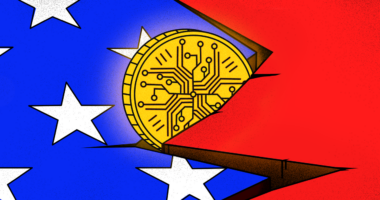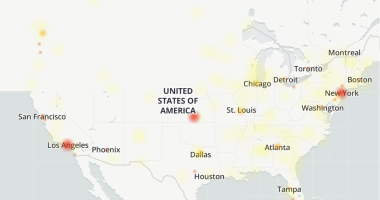
Humans are unable to detect over a quarter of speech samples generated by AI, researchers have warned.
Deepfakes are fake videos or audio clips intended to resemble a real person’s voice or appearance.
There are growing fears this kind of technology could be used by criminals and fraudsters to scam people out of money.
Now, scientists have discovered people can only tell the difference between real and deepfake speech 73 per cent of the time.
While early deepfake speech may have required thousands of samples of a person’s voice to be able to generate original audio, the latest algorithms can recreate a person’s voice using just a three-second clip of them speaking.

Real or deepfake? Humans are unable to detect over a quarter of speech samples generated by AI, researchers have warned. The video gives nine examples of the AI speech samples that people were played during the study. Scroll down to the bottom of the article to find out which are real and which are deepfakes
A team from University College London used an algorithm to generate 50 deepfake speech samples and played them for 529 participants.
They were only able to identify fake speech around three quarters of the time, which improved only slightly after they received training to recognise aspects of deepfake speech.
Kimberly Mai, first author of the study, said: ‘Our findings confirm that humans are unable to reliably detect deepfake speech, whether or not they have received training to help them spot artificial content.
‘It’s also worth noting that the samples that we used in this study were created with algorithms that are relatively old, which raises the question whether humans would be less able to detect deepfake speech created using the most sophisticated technology available now and in the future.’
Tech firm Apple recently announced software for iPhone and iPad that allows a user to create a copy of their voice using 15 minutes of recordings.
Documented cases of deepfake speech being used by criminals include one 2019 incident where the CEO of a British energy company was convinced to transfer hundreds of thousands of pounds to a false supplier by a deepfake recording of his boss’s voice.


At the end of March, a deepfake photo of Pope Francis wearing an enormous white puffer jacket (left) went viral and fooled thousands into believing it was real. Social media users also debunked a supposedly AI-generated image of a cat with reptilian black and yellow splotches on its body (right), which had been declared a newly-discovered species
But along with growing fears over the technology it can also be beneficial – for example for those whose speech may be limited or who may lose their voice due to illness.
Professor Lewis Griffin, senior author of the study, said: ‘With generative artificial intelligence technology getting more sophisticated and many of these tools openly available, we’re on the verge of seeing numerous benefits as well as risks.
‘It would be prudent for governments and organisations to develop strategies to deal with abuse of these tools, certainly, but we should also recognise the positive possibilities that are on the horizon.’
The findings were published in the journal Plos One.
Answers: 1 – Real, 2 – Fake, 3 – Fake, 4 – Fake, 5 – Real, 6 – Real, 7 – Real, 8 – Fake, 9 – Fake.








